#1 June 1796
Photo







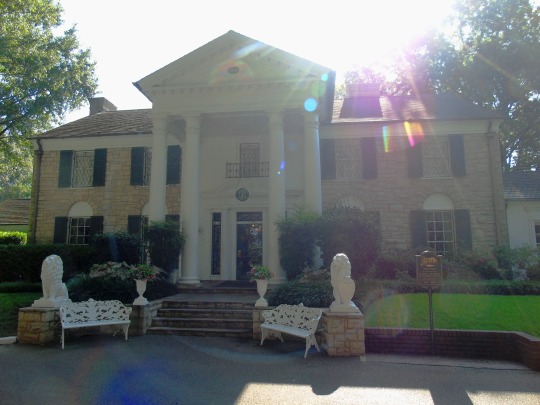


Tennessee was admitted as the 16th state of the United States on June 1, 1796.
#Tennessee#16th US State#1 June 1796#anniversary#US history#travel#Nashville#Pinnacle at Symphony Place#cityscape#architecture#landmark#original photography#Country Music Hall of Fame and Museum#Graceland#Memphis#Chattanooga Choo Choo#Chattanooga#Memphis Court Square#Chief John Ross Bridge#Tennessee River#Beale Street#Mississippi River#Cumberland River#Broadway#neon sign#summer 2016
3 notes
·
View notes
Text
ATLA Overall Character Stats
One thing I have been wondering for a while is how many lines of dialogue each character has in ATLA. I recently figured out an easy way to calculate it, so here are the stats for the entire series. You can look at the stats for Book 1, Book 2, and Book 3 at those links.
There are 9985 total lines of dialogue in the series. They are divided up as follows:
Aang 1796 lines, 17.99% of total lines
Sokka 1635 lines, 16.37%
Katara 1433 lines, 14.35%(this increases to 1439 lines and 14.81% when you include "Young Katara")
Zuko 776 lines, 7.77% (this increases to 809 lines and 8.10% when you include "Young Zuko)
Toph 508 lines, 5.09%
Iroh 337 lines, 3.38%
Azula 211 lines, 2.11%(this increases to 232 lines and 2.32% when you include "Young Azula")
Jet 134 lines, 1.34%
Suki 114 lines, 1.14%
Zhao 107 lines, 1.07%
Mai 82 lines, 0.82%(this increases to 83 lines and 0.83% when you include "Young Mai")
Hakoda 77 lines, 0.77%
Roku 67 lines, 0.67%
Ty Lee 64 lines, 0.64%(this increases to 66 lines and 0.66% when you include "Young Ty Lee)
Bumi 55 lines, 0.55%
Ozai 55 lines, 0.55%
Yue 53 lines, 0.53%
Hama 49 lines, 0.49%
Long Feng 46 lines, 0.46%
Piandao 43 lines, 0.430645969%
Mechanist 42, 0.420630946%
Kuei 40, 0.400600901%
Bato 38, 0.380570856%
Pathik 38, 0.380570856%
Pakku 37, 0.370555834%
Teo 35, 0.350525789%
Chong 33, 0330495744%
Warden of Boiling Rock 33, 0.330495744%
Young Zuko 33, 0.330495744%
Jeong Jeong 32, 0.320480721%
More obscure characters below
Guard 29 0.290435653
Haru 29 0.290435653
Joo Dee 29 0.290435653
June 28 0.280420631
Wu 28 0.280420631
Zhang leader 28 0.280420631
Xin Fu 27 0.270405608
Zei 27 0.270405608
Chit Sang 26 0.260390586
Sozin 26 0.260390586
Shyu 25 0.250375563
Gan Jin leader 23 0.230345518
Fong 22 0.220330496
Smellerbee 22 0.220330496
Ursa 22 0.220330496
Young Azula 21 0.210315473
Actress Aang 19 0.190285428
Gyatso 19 0.190285428
Yu 19 0.190285428
Arnook 18 0.180270406
Meng 18 0.180270406
Sun Warrior chief 18 0.180270406
Wan Shi Tong 18 0.180270406
Canyon guide 17 0.170255383
Captain 17 0.170255383
Jin 17 0.170255383
Lee 17 0.170255383
Oyaji 17 0.170255383
Tong 17 0.170255383
Actor Sokka 16 0.160240361
Actress Katara 16 0.160240361
Fisherman 16 0.160240361
King Bumi 16 0.160240361
Li 16 0.160240361
Tho 16 0.160240361
Tyro 16 0.160240361
Warden 16 0.160240361
Yon Rha 16 0.160240361
Bully guard 15 0.150225338
Due 15 0.150225338
Actor Zuko 14 0.140210315
Chey 14 0.140210315
Lao 14 0.140210315
Male guard 14 0.140210315
Pirate captain 14 0.140210315
Chan 13 0.130195293
Dock 13 0.130195293
Herbalist 13 0.130195293
Ghashiun 12 0.12018027
Huu 12 0.12018027
Ticket lady 12 0.12018027
Calm man 11 0.110165248
Female guard 11 0.110165248
Kay-fon 11 0.110165248
Lo 11 0.110165248
Lo and Li 11 0.110165248
Ying 11 0.110165248
Actress Azula 10 0.100150225
Earthbender captain 10 0.100150225
Gan Jin tribesman 10 0.100150225
Great Fire Sage 10 0.100150225
Headmaster 10 0.100150225
Jee 10 0.100150225
Kanna 10 0.100150225
Oh 10 0.100150225
Qin 10 0.100150225
Senlin Village leader 10 0.100150225
Song 10 0.100150225
Yung 10 0.100150225
Dai Li agent 9 0.090135203
Fisherman's wife 9 0.090135203
General Sung 9 0.090135203
Gow 9 0.090135203
Hahn 9 0.090135203
Haru's mother 9 0.090135203
Koh 9 0.090135203
Pipsqueak 9 0.090135203
Shinu 9 0.090135203
Soldier 9 0.090135203
The Boulder 9 0.090135203
The Duke 9 0.090135203
Xu 9 0.090135203
Gansu 8 0.08012018
Kenji 8 0.08012018
Kwan 8 0.08012018
Mother Superior 8 0.08012018
Old man 8 0.08012018
Shuzumu 8 0.08012018
Yagoda 8 0.08012018
Cabbage merchant 7 0.070105158
Fire Sage 7 0.070105158
Fung 7 0.070105158
General How 7 0.070105158
Koko 7 0.070105158
Male student 7 0.070105158
Man 7 0.070105158
Pao 7 0.070105158
Tashi 7 0.070105158
Than 7 0.070105158
Trainer 7 0.070105158
Villager 7 0.070105158
Warden Poon 7 0.070105158
Due to Tumblr limatations on length, I had to put the remaining characters(those with 6 or fewer lines) in a two separate posts .
#ATLA#avatar the last airbender#ATLA stats#ATLA lines#ATLA stat#Avatar#Aang#Katara#Zuko#Sokka#Iroh#Toph#Azula#Jet#Ty Lee#Suki#Mai#Roku#Hakoda#Ozai#Hama#Zhao#Yue
23 notes
·
View notes
Text
Bessières's correspondence
This is for @flowwochair: the index of the documents in the "Fonds Maréchal Bessières" in the French National Archives. Not much about the content, unfortunately. I summarised some points that I imagined were not all that interesting to you. Please let me know if there is something you'd want to have more details on and I will look if there is more.
1) Letters and orders by Napoleon to Bessières, dating from 1796 to 1813. It’s organized by the different armies and contains mostly »official« stuff of some importance, like documents related to the double abdication of the two Spanish Bourbon kings in 1808. Murat’s name is mentioned once, in connection with one document:
copies of Napoleon's instructions to Murat on how to deal with the Spanish, 17 and 28 April 1808
Maybe also of interest: some of the documents concern the reorganisation of the troops after the Russian campaign and date as late as mid and end-April 1813, so only days before his death
2) Letters from princes of the imperial family to Bessières
Mostly interesting because a large chunk seems to be labeled »a.s.«, which I believe to mean »autographe signée«, i.e., handwritten and signed. Most correspondence of important people would have been in the hands of secretaries, with the sender merely signing them. Bessières being worthy of receiving letters that these imperial princes had written themselves hints at a special position of trust.
41 letters from Joseph Bonaparte, related to events in Spain (1808 – 1811)
2 letters (not written by Jerome himself) about uprisings in Kassel in 1813
And here you go: 29 letters by Murat, in his own handwriting, relating to the daily report on the Guard, the policy to be followed, and to military events in Spain (dated 5 August 1805 to 5 June 1808)
Followed by some stuff for me: 22 letters from Eugène de Beauharnais, in his own handwriting and »d’un caractère surtout personnel« (of primarily private nature), dated 27 January 1805 - 5 June 1808
Other than that, there are letters from Josephine, Lebrun, Hortense, Stéphanie de Beauharnais, Méneval and the secretary of Madame Mère.
The rest of this section are documents related to Bessières’s military career, decorations etc.
3) Some personal letters. The connection between them escapes me
from Bessières to his sister-in-law (?), 22 February 1808.
from Bessières to a marshal on the reorganisation of the Guard, 27 January 1813.
from Madame la Maréchale concerning her financial distress, 12 December 1813 and 12 December 1814.
Facsimile of a letter from the Marshal to his wife, after his departure for the 1813 campaign
4) Certificates, letters of service and appointment, decorations
Some documents as early as 1792 among them, but mostly bits and bobs that seem unrelated
5) Letters adressed to Bessières – Army of Italy and Army of Egypt. 55 pieces
6) Ministers' reports to the Emperor and various letters. Plenty of documents and letters among them that are neither written by or adressed at Bessières
7) Imperial Guard I (Organisation, financial reports etc.)
8) Imperial Guard II (contains one more letter by Eugène!)
9) Imperial Guard III (Holland in 1810)
10) Legion of Honour and pay. 73 pieces, 1804 to 1813
11) Russia. Letters adressed to Bessières, situation reports, mostly from before the campaign started
12) Letters from Napoleon, the imperial family, the royal family and several famous personalities. A lot of them obviously from after Bessières’s death, among them (condolation) letters to Madame la Maréchale from
Napoleon - 6 May 1813
Madame Mère – 7 May 1813
Marie Louise – 5 May 1813
Caroline Murat – 25 May 1813
Eugène Beauharnais – 2 June 1813
Joachim Murat – 8 June 1813
Also contains 18 letters from Hortense de Beauharnais to Madame la Maréchale, dated 1809 to 1813, letters from Madame la Maréchale Oudinot, from Laure Junot, from Wellington (handwritten!) and plenty more
And on a happier note: a letter by Joachim Murat dated 1 Germinal year VIII (22 March 1800)
13) Related to Bessières’s city house
14) Correspondence between Marshal Bessières and Madame la Maréchale I
3 letters from Bessières to his wife, 2 prairial-15 vendémiaire an XIV (22 January-7 October 1805)
75 letters of Madame la Maréchale to Bessières, found in the cassette of the marshal after his death, 5 January 1806-1 May 1807
29 letters of Bessières to his wife, 26 March-13 December 1808
15) Correspondence between Marshal Bessières and Madame la Maréchale II. Continuation from above
72 (? I’m not sure about the numbering here) letters from Bessières to his wife, 5 January 1809, 28 September and ... 1811
48 (?) letters from Madame la Maréchale to the Marshal, January-9 December 1811
16) Correspondence between Marshal Bessières and Madame la Maréchale III. Continuation from above
9 letters from the Maréchale Bessières to her husband, 19 March - 16 December 1812
40 letters from Bessières to his wife, 13 January 1812 - 24 April 1813
17) Related to the electoral college of département Haute-Garonne
18) Personal papers, financial documents, real estate etc.
19) Letters to Madame la Maréchale during Restauration and July Monarchy
20) Collection of autographed letters unrelated to Bessières
37 notes
·
View notes
Text
The napoleonic marshal‘s children
After seeing @josefavomjaaga’s and @northernmariette’s marshal calendar, I wanted to do a similar thing for all the marshal’s children! So I did! I hope you like it. c:
I listed them in more or less chronological order but categorised them in years (especially because we don‘t know all their birthdays).
At the end of this post you are going to find remarks about some of the marshals because not every child is listed! ^^“
To the question about the sources: I mostly googled it and searched their dates in Wikipedia, ahaha. Nevertheless, I also found this website. However, I would be careful with it. We are talking about history and different sources can have different dates.
I am always open for corrections. Just correct me in the comments if you find or know a trustful source which would show that one or some of the dates are incorrect.
At the end of the day it is harmless fun and research. :)
Pre 1790
François Étienne Kellermann (4 August 1770- 2 June 1835)
Marguerite Cécile Kellermann (15 March 1773 - 12 August 1850)
Ernestine Grouchy (1787–1866)
Mélanie Marie Josèphe de Pérignon (1788 - 1858)
Alphonse Grouchy (1789–1864)
Jean-Baptiste Sophie Pierre de Pérignon (1789- 14 January 1807)
Marie Françoise Germaine de Pérignon (1789 - 15 May 1844)
Angélique Catherine Jourdan (1789 or 1791 - 7 March 1879)
1790 - 1791
Marie-Louise Oudinot (1790–1832)
Marie-Anne Masséna (8 July 1790 - 1794)
Charles Oudinot (1791 - 1863)
Aimee-Clementine Grouchy (1791–1826)
Anne-Francoise Moncey (1791–1842)
1792 - 1793
Bon-Louis Moncey (1792–1817)
Victorine Perrin (1792–1822)
Anne-Charlotte Macdonald (1792–1870)
François Henri de Pérignon (23 February 1793 - 19 October 1841)
Jacques Prosper Masséna (25 June 1793 - 13 May 1821)
1794 - 1795
Victoire Thècle Masséna (28 September 1794 - 18 March 1857)
Adele-Elisabeth Macdonald (1794–1822)
Marguerite-Félécité Desprez (1795-1854); adopted by Sérurier
Nicolette Oudinot (1795–1865)
Charles Perrin (1795–15 March 1827)
1796 - 1997
Emilie Oudinot (1796–1805)
Victor Grouchy (1796–1864)
Napoleon-Victor Perrin (24 October 1796 - 2 December 1853)
Jeanne Madeleine Delphine Jourdan (1797-1839)
1799
François Victor Masséna (2 April 1799 - 16 April 1863)
Joseph François Oscar Bernadotte (4 July 1799 – 8 July 1859)
Auguste Oudinot (1799–1835)
Caroline de Pérignon (1799-1819)
Eugene Perrin (1799–1852)
1800
Nina Jourdan (1800-1833)
Caroline Mortier de Trevise (1800–1842)
1801
Achille Charles Louis Napoléon Murat (21 January 1801 - 15 April 1847)
Louis Napoléon Lannes (30 July 1801 – 19 July 1874)
Elise Oudinot (1801–1882)
1802
Marie Letizia Joséphine Annonciade Murat (26 April 1802 - 12 March 1859)
Alfred-Jean Lannes (11 July 1802 – 20 June 1861)
Napoléon Bessière (2 August 1802 - 21 July 1856)
Paul Davout (1802–1803)
Napoléon Soult (1802–1857)
1803
Marie-Agnès Irma de Pérignon (5 April 1803 - 16 December 1849)
Joseph Napoléon Ney (8 May 1803 – 25 July 1857)
Lucien Charles Joseph Napoléon Murat (16 May 1803 - 10 April 1878)
Jean-Ernest Lannes (20 July 1803 – 24 November 1882)
Alexandrine-Aimee Macdonald (1803–1869)
Sophie Malvina Joséphine Mortier de Trévise ( 1803 - ???)
1804
Napoléon Mortier de Trévise (6 August 1804 - 29 December 1869)
Michel Louis Félix Ney (24 August 1804 – 14 July 1854)
Gustave-Olivier Lannes (4 December 1804 – 25 August 1875)
Joséphine Davout (1804–1805)
Hortense Soult (1804–1862)
Octavie de Pérignon (1804-1847)
1805
Louise Julie Caroline Murat (21 March 1805 - 1 December 1889)
Antoinette Joséphine Davout (1805 – 19 August 1821)
Stephanie-Josephine Perrin (1805–1832)
1806
Josephine-Louise Lannes (4 March 1806 – 8 November 1889)
Eugène Michel Ney (12 July 1806 – 25 October 1845)
Edouard Moriter de Trévise (1806–1815)
Léopold de Pérignon (1806-1862)
1807
Adèle Napoleone Davout (June 1807 – 21 January 1885)
Jeanne-Francoise Moncey (1807–1853)
1808: Stephanie Oudinot (1808-1893)
1809: Napoleon Davout (1809–1810)
1810: Napoleon Alexander Berthier (11 September 1810 – 10 February 1887)
1811
Napoleon Louis Davout (6 January 1811 - 13 June 1853)
Louise-Honorine Suchet (1811 – 1885)
Louise Mortier de Tr��vise (1811–1831)
1812
Edgar Napoléon Henry Ney (12 April 1812 – 4 October 1882)
Caroline-Joséphine Berthier (22 August 1812 – 1905)
Jules Davout (December 1812 - 1813)
1813: Louis-Napoleon Suchet (23 May 1813- 22 July 1867/77)
1814: Eve-Stéphanie Mortier de Trévise (1814–1831)
1815
Marie Anne Berthier (February 1815 - 23 July 1878)
Adelaide Louise Davout (8 July 1815 – 6 October 1892)
Laurent François or Laurent-Camille Saint-Cyr (I found two almost similar names with the same date so) (30 December 1815 – 30 January 1904)
1816: Louise Marie Oudinot (1816 - 1909)
1817
Caroline Oudinot (1817–1896)
Caroline Soult (1817–1817)
1819: Charles-Joseph Oudinot (1819–1858)
1820: Anne-Marie Suchet (1820 - 27 May 1835)
1822: Henri Oudinot ( 3 February 1822 – 29 July 1891)
1824: Louis Marie Macdonald (11 November 1824 - 6 April 1881.)
1830: Noemie Grouchy (1830–1843)
——————
Children without clear birthdays:
Camille Jourdan (died in 1842)
Sophie Jourdan (died in 1820)
Additional remarks:
- Marshal Berthier died 8.5 months before his last daughter‘s birth.
- Marshal Oudinot had 11 children and the age difference between his first and last child is around 32 years.
- The age difference between marshal Grouchy‘s first and last child is around 43 years.
- Marshal Lefebvre had fourteen children (12 sons, 2 daughters) but I couldn‘t find anything kind of reliable about them so they are not listed above. I am aware that two sons of him were listed in the link above. Nevertheless, I was uncertain to name them in my list because I thought that his last living son died in the Russian campaign while the website writes about the possibility of another son dying in 1817.
- Marshal Augerau had no children.
- Marshal Brune had apparently adopted two daughters whose names are unknown.
- Marshal Pérignon: I couldn‘t find anything about his daughters, Justine, Elisabeth and Adèle, except that they died in infancy.
- Marshal Sérurier had no biological children but adopted Marguerite-Félécité Desprez in 1814.
- Marshal Marmont had no children.
- I found out that marshal Saint-Cyr married his first cousin, lol.
- I didn‘t find anything about marshal Poniatowski having children. Apparently, he wasn‘t married either (thank you, @northernmariette for the correction of this fact! c:)
#Marshal‘s children calendar#literally every napoleonic marshal ahaha#napoleonic era#Napoleonic children#I am not putting all the children‘s names into the tags#Thank you no thank you! :)#YES I posted it without double checking every child so don‘t be surprised when I have to correct some stuff 😭#napoleon's marshals#napoleonic
66 notes
·
View notes
Text

Jacques Augustin Catherine Pajou - Louis-Alexandre Berthier, Prince de Neufchâtel et de Wagram, maréchal de France - 1808
oil on canvas, height: 215 cm (84.6 in); width: 133 cm (52.3 in)
Palace of Versailles
Louis-Alexandre Berthier (20 November 1753 – 1 June 1815), Prince of Neuchâtel and Valangin, Prince of Wagram, was a French military commander who served during the French Revolutionary Wars and the Napoleonic Wars. He was twice Minister of War of France and was made a Marshal of the Empire in 1804. Berthier served as chief of staff to Napoleon Bonaparte from his first Italian campaign in 1796 until his first abdication in 1814. The operational efficiency of the Grande Armée owed much to his considerable administrative and organizational skills.
Born into a military family, Berthier served in the American Revolutionary War and survived suspicion of monarchism during the Reign of Terror before a rapid rise in the ranks of the French Revolutionary Army. Although a key supporter of the coup against the Directory that gave Napoleon supreme power, and present for his greatest victories, Berthier strongly opposed the progressive stretching of lines of communication during the Russian campaign. Allowed to retire by the restored Bourbon regime, he died of unnatural causes shortly before the Battle of Waterloo. Berthier's reputation as a superb operational organiser remains strong among current historians.
Jacques-Augustin-Catherine Pajou (27 August 1766, Paris - 28 November 1828, Paris) was a French painter in the Classical style.
8 notes
·
View notes
Text
Mary Anne Talbot - a female Soldier and Sailor
Mary Anne Talbot is one of the women who have the adventure of serving at sea disguised as a male sailor. She was born in London on 2 February 1778, the illegitimate daughter of William Talbot, 1st Earl Talbot. Her mother died at birth, her presumed father when she was four years old. She was brought up by a wet nurse at Worthen in Shropshire until she was five, after which she attended a private boarding school in Chester, run by a Mrs Tapperly, until she was 14. The only relative she knew was an elder sister, an Hon. Miss Dyer, who also died quite young in the birth of her child in 1791. She enlightened Mary Anne about her presumed parentage before her death and left her a handsome fortune of £30,000 sterling. From this fortune Mary Anne could have had an annual income of 1500 pounds, but her sister's chosen guardian, a Mr. Sucker, did not provide for her further education, but gave her to Essex Bowen, a captain in the 82nd Regiment of Foot.

Mary Anne Talbot, by G. Scott, after James Green, published 1804 (x)
The latter took her to London, where he made her his not-so-voluntary mistress in 1792. But already in the autumn of 1792 he was to go to Flanders and simply took her with him. To this end, he passed her off as an errand boy, who took her to St. Domingo as John Taylor. From there she went to Flanders, where she was now listed as Drummer Boy. As such she took part in the capture of Valenciennes on 28 July 1793, where Captain Essex was killed. She now deserted the regiment and made her way through Luxembourg to the Rhine, until in September 1793, out of necessity, she signed on as a cabin boy to the captain of a French lugger called Le Sage. The lugger, according to her account, had been captured by Lord Howe in the Queen Charlotte, and "Taylor" (as she still called herself) was assigned to HMS Brunswick 74 guns under Captain John Harvey (1740-1794) as a powder monkey, in which capacity she took part in the great victory of 1 June 1794, but was severely wounded by a grape shot that shattered her left ankle.

Captain Essex with his footboy John Talbot (x)
She spent four months at Haslar Royal Naval Hospital in Gosport. She then became a midshipman on the Bomb Vessel Vesuvius. However, this was captured off Normandy by two French privateers. As a prisoner, Taylor remained in Dunkirk for 18th months. After her release, she signed on with the American ship Ariel under Captain John Field, sailing to New York in August 1796. In November she returned to London on the Ariel. There she was picked up by a press gang in Wapping. In order not to have to re-enter the Royal Navy, she revealed her true gender, whereupon she was discharged. She then haunted the Navy's pay office for some time, and various donations were collected for her. But she was intemperate and spent her money frivolously. The Duke and Duchess of York and the Duchess of Devonshire, it is said, interceded for her.

Mary Anne Talbot resisting a Press Gang, by John Chapman (x)
After a series of employments including a gig as a jeweller's assistant or a performance in a small theatre in Tottenham Court Road in the Babes in the Wood, and a stay in Newgate from which she was rescued by the Society for the Relief of Persons confined for small Debts, her misfortunes forced her to take refuge as a domestic servant in the house of the publisher Robert S. Kirby in St. Paul's Churchyard, who recorded her adventures in the second volume of his Wonderful Museum, 1804 and continued her story in The Life and Surprising Adventures of Mary Anne Talbot, 1809. After three years' service, a general deterioration, caused in part by the wounds and privations she had suffered, rendered her unable to work regularly, and she was removed to the house of an acquaintance in Shropshire at the end of 1807. There she remained for some weeks, and died on 4 February 1808, aged 30.
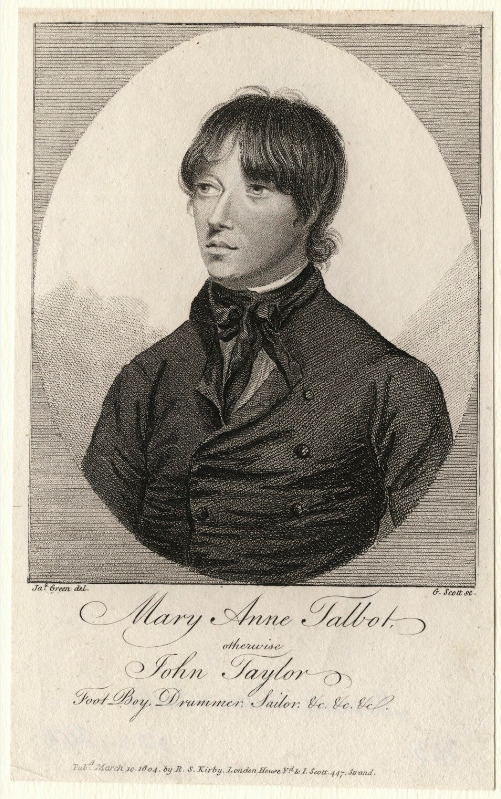
Mary Anne Talbot, by G. Scott, after James Green, published 1804 (x)
Perhaps some of you have noticed that there are certain similarities to Hannah Snell. And in fact, her story is very much in doubt. Because there are great inconsistencies with the times and the ships that she had given in her biography. Because there is no Talbot on the ships listed and there was no Talbot on the Vesuvius at the time it was captured, and the capture itself is also questionable because the ship was not off Normandy at that time but in the West Indies. Whether she just mixed things up here or whether they were chosen to spice up her story is questionable, and it cannot be ruled out that this story was a product of fantasy.
#naval history#mary anne talbot#female soldier and sailor#late 18th -early 19th century#women at sea#age of sail
70 notes
·
View notes
Note
Hey there! :) Curious if you can share some information about the dishonor that Major Tousard speaks about in his letter to Georges de La Fayette / the situation surrounding that particular letter.
Dear @ouiouixmonami,
I happily will do that. You have to apologize that my answer is somewhat delayed – your question got, in the truest sense of the word, lost in translation. I translated the term “brother-in-law” wrong in my head while pounding your question and that in turn let me to search for a person that never existed – but now I am back on track. :-)
For everybody who does not know the context, the question was asked in relation to this letter from a Major Lewis/Louis de Tousard to Georges de La Fayette.
Major Lewis/Louis de Tousard had married Anna Maria in 1795. Geddes had a brother, Simon Geddes. Geddes (died 1807) entered the military and on July 31, 1794, George Washington wrote in a letter to the Senate of the United States:
I nominate the following persons as Company Officers and Surgeon and Surgeons Mates in the Corps of Artillerists and Engineers.
“From George Washington to the United States Senate, 31 May 1794,” Founders Online, National Archives, https://founders.archives.gov/documents/Washington/05-16-02-0138. [Original source: The Papers of George Washington, Presidential Series, vol. 16, 1 May–30 September 1794, ed. David R. Hoth and Carol S. Ebel. Charlottesville: University of Virginia Press, 2011, pp. 165–166.] (05/10/2023)
Simon Geddes of Delaware was one of the names on the list and he was thus made a lieutenant in June of 1794. Geddes next appears in the records in February of 1795 when he confirms Captain Bruff’s representation of the character of William B. Smith. They all served in the same corps.
Simon Geddes was found guilty and was dismissed from service during a court-martial held on May 12, 1796 (the sentence was not pronounced until the 16th of May). The records are sadly lost so we do not what his misconducts were. Regardless of that, Geddes applied to James McHenry, then Secretary of War, on June 8, 1796 for a re-trial based on a procedural error. James McHenry explained the matter in a letter to George Washington on June 14, 1796:
It is declared, in the articles of war, vz. Art. 1. for the administration of justice, that, “General courts-martial may consist of any number of commissioned officers from five to thirteen, inclusively; but they shall not consist of less than thirteen where that number can be convened without manifest injury to the service.”
This article discovers great solicitude that general courts-martial should consist of the highest number of members it prescribes; and implies very strongly, that every number inclusively between five and thirteen, is to be sought for, and prefered to that of five. It does more. It expresly precludes five members from being considered as a constitutional general court-martial, whenever thirteen can be convened, without manifest injury to the service.
A general court martial therefore, which should consist of five members only, could not be held to be legal, unless it should be evident that more members could not have been added, so as to approach it to thirteen without manifest injury to the service.
Viewing the question in this aspect, it might be proper, that the fact should be ascertained, whether the situation of the garrison or corps at West-Point, (at the time when the court tried Lt Geddis) was such, as to render a limitation of its members to five an indispensible measure. (…) I would submit therefore the propriety of returning the proceedings to the commandant of the corps at West Point, with instructions to make the necessary investigation, and grant a new trial, if it should appear to him, that a greater number of members than five might have been convened at that time, “without manifest injury to the service.
“To George Washington from James McHenry, 14 June 1796,” Founders Online, National Archives, https://founders.archives.gov/documents/Washington/05-20-02-0199. [Original source: The Papers of George Washington, Presidential Series, vol. 20, 1 April–21 September 1796, ed. David R. Hoth and William M. Ferraro. Charlottesville: University of Virginia Press, 2019, pp. 287–289.] (05/10/2023)
In short, Geddes, who had been found guilty by a committee of only five men, argued that the situation at West-Point at the time was such, that more man could have taken part in his court-martial.
Washington replied to McHenry on June 22 and agreed with his assessment, the matter was to be returned to the commandant as West Point – but it only got more complicated from here on. On July 26, McHenry received a letter from the officers at West Point, requesting that Geddes was to be released and pardoned. James McHenry faithfully brought the matter before Washington on the same day and stated his opinion whether Washington was at all able to revoke the sentence passed by the court-martial since a new law had recently been passed:
I have also received this morning the inclosed letter, and representation from the officers at West-point, praying that Lt Geddis may be released from his arrest.
On this subject I would observe, That the act passed last session of Congress fixing the military establishment of the U.S. contains the following section.
Sect. 18. “And be it further enacted that the sentences of general courts-martial, in time of peace, extending to the loss of life, the dismission of a commissioned officer; or which shall, either in time of peace or war, respect a general officer, shall with the whole of the proceedings in such cases, respectively, be laid before the President of the U.S.; who is hereby authorised to direct the same to be carried into execution or otherwise as he shall judge proper.”
This clause was incorporated into the act in order to remove some doubts heretofore started respecting the power of the President to pardon certain military offences in time of peace.
For my own part, I have no doubt, that independent of this act, the President possesses the power to remit sentences of courts martial extending to the loss of life or dismission of a commissioned officer I consider that part of the act therefore as surplusage.
If however it was to serve as authority it would not apply to the present case; inasmuch as it has had no retroactive effect given to it. The sentence on Geddis was pronounced on the 16th of May; and the act in question passed on the 30th.
I look to a higher authority for the power of the President to remit sentences of courts-martial.
The constitution art. II. sect. 2. constitutes the President [“]commander in chief of the army and navy of the U.S.” and vests him with “power to grant reprieves and pardons for offences against the U.S., except in cases of impeachment.”
Congress cannot pass any regulations for the government of the land and naval forces which may intrench upon, invalidate or nullify this power to pardon offences against the United States.
If this is a true exposition of the constitution, the President may if he should think proper comply with the request in favour of Lt Geddis.
“To George Washington from James McHenry, 26 July 1796,” Founders Online, National Archives, https://founders.archives.gov/documents/Washington/05-20-02-0319. [Original source: The Papers of George Washington, Presidential Series, vol. 20, 1 April–21 September 1796, ed. David R. Hoth and William M. Ferraro. Charlottesville: University of Virginia Press, 2019, pp. 497–500.] (05/10/2023)
In his letter from August 1, Washington was in favour of both McHenry’s reasoning and Gedde’s acquittal. But even he was not completely sure how to best go about it and wanted to confer with the Attorney General. He wrote:
I have no objection to the releasement of Lieutt Geddis from his present arrest, at the request of those Officers who have asked it; But as the Attorney General will be at Philadelphia, I would have his opinion taken on the power of granting a pardon for the Offence of which he has been found guilty, and Cashiered; and the mode by which it may, with propriety, be accomplished: for it may be questioned, whether a remital of the Sentence of the Court, ought not to be preceeded by an act of approval, or rejection, as the foundation. At any rate some attention to the form (which I request may be given) will be necessary.
“From George Washington to James McHenry, 1 August 1796,” Founders Online, National Archives, https://founders.archives.gov/documents/Washington/05-20-02-0334. [Original source: The Papers of George Washington, Presidential Series, vol. 20, 1 April–21 September 1796, ed. David R. Hoth and William M. Ferraro. Charlottesville: University of Virginia Press, 2019, pp. 546–547.] (05/10/2023)
Charles Lee wrote on August 4 to James McHenry that:
The Attorney General is of opinion that the President of the United States has power to Pardon Lieutenant Geddes for the offence of which he has been found guilty, though the sentence of the court martial has neither been rejected or approved. The enclosed form may be used.
Notes of “To George Washington from James McHenry, 8 August 1796,” Founders Online, National Archives, https://founders.archives.gov/documents/Washington/05-20-02-0349. [Original source: The Papers of George Washington, Presidential Series, vol. 20, 1 April–21 September 1796, ed. David R. Hoth and William M. Ferraro. Charlottesville: University of Virginia Press, 2019, pp. 565–567.] (05/10/2023)
James McHenry transferred the Attorney General’s opinion and the filled-out form to Washington on August 8 and Geddes was pardoned on August 12, 1796 by Washington’s signature, based on the following:
in consideration of the youth and inexperience of Lieutenant Geddes and for divers other good causes
Notes of “To George Washington from James McHenry, 8 August 1796,” Founders Online, National Archives, https://founders.archives.gov/documents/Washington/05-20-02-0349. [Original source: The Papers of George Washington, Presidential Series, vol. 20, 1 April–21 September 1796, ed. David R. Hoth and William M. Ferraro. Charlottesville: University of Virginia Press, 2019, pp. 565–567.] (05/10/2023)
Geddes was ordered to return to his command. One should think that the story ends here and that Geddes, lucky to have escaped without any serious consequences, would stay clear of any trouble – well, no.

Journal of the United States Artillery, Vol. 29, Artillery School Press, Virginia, 1908, p. 85.
After Geddes ultimate dismissal, Washington nominated a man named Robert Parkinson to replace Geddes and Parkinson did so on December 19, 1796.
With all that being said, I apologize for writing such a long post without really answering your question since I have no information on the original “dishounor” Tousard mentioned in his letter. But at least we know now that Simon Geddes managed to get himself in a whole lot of trouble.
I hope you have/had a beautiful day!
#ask me anything#ouiouixmonami#french history#american history#american revolution#history#letter#james mchenry#george washington#anna marie geddes#louis de tousard#lewis tousard#georges de la fayette#1796#1795#1794#simon geddes#founders online#west point#nathaniel cudworth#charles lee#robert parkinson
14 notes
·
View notes
Text
Who is the worst?
Round 1: Tench Tilghman vs Thomas Paine

Tench Tilghman (December 25, 1744 – April 18, 1786) was an officer in the Continental Army during the American Revolutionary War. He served as an aide-de-camp to General George Washington, achieving the rank of lieutenant colonel.
How Tilghman came to join Washington's staff are unknown, but the Washington family and Tilghman family had familial connections.
On June 9, 1783, in St. Michael's Parish, Tilghman married Anna Maria Tilghman, his first cousin and daughter of Matthew Tilghman.
Thomas Paine (born Thomas Pain; February 9, 1737 [O.S. January 29, 1736][Note 1] – June 8, 1809) was an English-born American political activist, philosopher, political theorist, and revolutionary. He authored Common Sense (1776) and The American Crisis (1776–1783), two of the most influential pamphlets at the start of the American Revolution, and helped inspire the Patriots in 1776 to declare independence from Great Britain, theretofore an unpopular cause. His ideas reflected Enlightenment-era ideals of transnational human rights.
Paine became notorious because of his pamphlets and attacks on his former allies, who he felt had betrayed him. In The Age of Reason and other writings he advocated Deism, promoted reason and freethought, and argued against institutionalized religions in general and the Christian doctrine in particular. In 1796, he published a bitter open letter to George Washington, whom he denounced as an incompetent general and a hypocrite. He published the pamphlet Agrarian Justice (1797), discussing the origins of property and introduced the concept of a guaranteed minimum income through a one-time inheritance tax on landowners. In 1802, he returned to the U.S. When he died on June 8, 1809, only six people attended his funeral, as he had been ostracized for his ridicule of Christianity and attacks on the nation's leaders.
#founding father bracket#worst founding father#founding fathers#amrev#brackets#thomas paine#tench tilghman
8 notes
·
View notes
Text
SAINT OF THE DAY (June 12)

St. Gasper Bertoni was born on 9 October 1777 in Verona, Italy. He was baptized the day after.
He belonged to an affluent family and that his family's faith-life was also quite notable.
Gasper was an only child as his baby sister passed away. He had the benefit of an excellent education, both at home and at St. Sebastian's school, which was run by Jesuits.
From the grace of his first Holy Communion at age 11, Gaspar Bertoni was called to a life of mystical union.
His vocation to the priesthood matured. At the age of 18, he entered the seminary.
In frequenting the theological course as an extern student, he found in his professor of moral theology, Fr. Nicholas Galvani, an excellent spiritual director.
He was known to have helped the sick and hurt during the invasion of French armies in 1796, the beginning of a 20-year period of upheaval during which he tended to those in need.
He took over the spiritual direction of a community founded then by St. Magdalena of Canossa at St. Joseph's Convent in May 1808.
On 4 November 1816, with two companions, he moved into a small house, adjacent to a suppressed Church that bore the title of the "Sacred Stigmata of St. Francis.
(From this, the name of his community was eventually adapted; in this small church, he also worked to spread the devotion to the Passion and the wounds of Christ).
In a very unostentatious manner, the new community opened a tuition-free school, offering this and other gratuitous services to the Church and society.
The men lived together a common life of strict observance and penance.
An intense life of contemplation was joined to a broad apostolate, including the Christian education of the youth and the formation of the clergy and missionary preaching, in perfect availability to the requests of the bishop.
Right after an ecstasy that he experienced praying before a Crucifix on 30 May 1812, he suffered a first attack of "miliary fever" that brought him to the very threshold of death.
Almost miraculously, he did recover.
However, for the rest of his 41 years of life, he remained in poor health, all this while giving a wonderful example of patience and heroic confident abandonment to God.
Even from his sick-bed, suffering indescribable discomfort, he became the "angel of counsel" for countless persons who sought him out.
He died on 12 June 1853.
He was beatified by Pope Paul VI on 1 November 1975. He was canonized by Pope John Paul II on 1 November 1989.
His Congregation of the Sacred Stigmata of Our Lord Jesus Christ, enriched by so many sufferings, gradually spread beyond Verona — to other cities in Italy, United States, Brazil (where it presently has 6 Bishops), Chile, Philippines, and to mission territories: South Africa, the Ivory Coast, Tanzania, Thailand.
3 notes
·
View notes
Text
Tennessee/Kentucky Brainrot
I love this ship and I can’t stop thinking about it. So now I’m just going to make you all listen to it.
They are the oldest couple in the statehouse, known as the “old married couple of the South”. Even though they aren’t married (yet) They’ve been together since the early 1800s. June 1st 1823 to be exact. (Both of them became states on June 1st (1792- KY; 1796- TN), so it’s an important day for them).
They knew each other before statehood as well. Both Kentucky and Tennessee had efforts to become states around the same time. So they would tease each other and had a little competition to see who would become the 14th state.
Vermont ended up being the 14th state. And when Kentucky became the 15th state the novelty of “new states” had already worn off on the others. So unlike with Vermont, there was no celebration for his statehood.
He had gone home that night a little defeated. Tennessee had teased him, asking if he was rejected statehood again. But when he learned that Kentucky did get statehood, there was just no celebration, he set off for home and returned the next day with baked goodies and a wood whittled horse. They had their own celebration. And Tennessee made Kentucky pinkie promise to return the favor when he got statehood.
Tenn had meant it as a joke at the time. But 4 years later when he got his statehood Kentucky showed up with a baked treat and quilted blanket.
They stayed in touch as just casual friends for the next couple years. Then the War of 1812 happened. Tennessee, the Volunteer state, volunteered as a soldier (that’s where the nickname comes from). And Kentucky ended up running supplies between troops and acting as battlefield nurse.
Tenn did get injured in the war. Kentucky was the one to pull him out of harms way and treat his injuries.
They moved into a house on the border of their states after that war so that Ken could stay and help Tenn while he continued to recover from his war injury. This close contact made them realize that they liked each other. And eventually Tenn admitted his feelings. They started dating shortly after that.
They built up that little house on the border to be more permanent. It became like a farm house. There’s a garden and a barn with animals.
Just after the Civil War there was some family drama for Ken. (Besides VA and WV not being on good terms. There was the Hatfields v McCoys thing that strained WV and KY’s relationship) And Tennessee comforted him through it.
These two are big helps around their community. Volunteering often. During the Great Depression they took in boarders and wouldn’t charge them or charged them a very cheap price if the boarder insisted on paying.
During Prohibition, Ken would make illegal alcohol. Tenn made sure the cops didn’t find out. He’d also arrange for the alcohol to be sold to speakeasy’s and such.
In 1973, 150 years after getting together, Tenn presented Ken with a set of promise rings that he made. The rings were spoon rings. (Spoons bent around to make a ring).
They aren’t married yet, but the others are pushing them to plan their wedding. The date will be June 1st, 2023. 200 years after getting together.
Tenn’s love language is physical touch. If he’s able to, he will have his hands on Ken. More often than not, at the statehouse he can be found with his arms wrapped around Ken’s waist. His head resting on top of Ken’s. Or buried in his neck. After all, Tennessee is about half a foot taller than Kentucky. (Kentucky is short, about 5′1, which he’s actually happy about because he can be a jockey more easily that way).
At night he sleeps with an arm and leg wrapped around Ken. Because he’s a clinger in his sleep.
Kentucky’s love language is gift giving. Combined with his artistic abilities (knitting, embroidery, quilting, etc) this means he makes Tenn a lot of gifts himself. Every winter Ken makes him a new sweater so that he doesn’t get cold.
As the “old married couple”, half their dates are just them sitting at home. Usually in Kentucky’s lab (which Tenn built him as a gift one year). They play footsies under a desk as Tenn works on reports and Ken knits another project.
#welcome to the table#welcome to the statehouse#ben brainard#wttt#wttsh#Kentucky wttt#Tennessee wttt#long post#tw alcohol#I totally just rambled#Sorry#But like the feels
24 notes
·
View notes
Note
BTS for the regicide AU? -River
Ask Game
@egopocalypse
Regicide is a bit too big for me to comment on as a whole because as of the 16th, the total for the transcripts of au related dms I’ve been maintaining stands at 738,123 words over 1796 pages. However, I thought I'd focus on the behind the scenes of I Beg of Thee Have Mercy On Me (I Was Just a Boy, You See) since that's a good way to look at the world of Regicide through a single fic.
For any followers who might not know, Regicide is a royalty au that Anon and I created back in January and have brainrotted about on daily basis ever since. There are 15 paths, grouped into the three categories of Fratricide, Patricide and L’Manburg (aka war). So when I say stuff like F1 or P3, I mean the first fratricide and third patricide paths etc.
It goes without saying but this will contain spoilers for the fic. And because this is F1, there is a section about suicidal ideation and self harm but I’ve put a warning right before I talk about it and it’s only one paragraph.
It's mentioned at the start that Wilbur is the 7th son and 13th child. There will be 26 kids in total, 15 of them being boys. The reason for this is because, when I tried to create half brothers, I was a dumbass who asked Anon to pick a number between 1 and 20. If I was smart, I would have said 10 or at least made 'up to 20' for siblings, not just brothers. Either way, she said 15 thanks to having no context regarding her decision and then when I was filling up the list with sisters, 11 girls popped up unintentionally. Oh and also, Wilbur was originally Sextus (6th son) with Septimus born a week after him. However we decided we didn't want Wilbur to have the awkward name so the other brother's birthday became September 6th, making him Sextus instead. This did open the door for me to decide I wanted Wilbur to get close to Sextus since he knows he could have been teased instead if their birthdays were switched. Which then developed into them becoming close just because of proximity in age in general. He is my favourite of the half brothers and I am holding him gently. He and Wilbur are so close that Fundy’s middle name is Christopher after Sextus in most paths (it’s Wilbur in those where he’s dead before he can meet his son).

Anon and I tend to discuss non-canon versions of paths nearly as often as we do canon events. Kidbur's near death experience is no exception. A lot of talk is about a sweet 4 year old ghost who gets really upset because most of his family is ignoring him (aka literally can't see him). Also wholesome stuff like his grandfather looking after him once Wilbur moves on, then him meeting 17yo Tommy after Techno makes all their brothers join Wilbur. But in canon, we have it that he got sick while attending celebrations for the 1500th anniversary of the capital’s founding. As much as Phil is indifferent about his younger sons, he does rush back from attending celebrations elsewhere to provide moral support and keep an eye on their kids so Kristin can focus on tending to Wilbur. Once they’re in the clear, Phil takes Techno to see a play about Wilbur I, as a way of teaching him about the fratricide tradition.
I’m not sure why we decided to make 10 the age princes learn about fratricide. I honestly think it was just a nice round number, old enough for them to begin understanding the reality of their situation but young enough to not leave them oblivious for too long. Technoblade was told by Phil when he was 9 thanks to favouritism and of course, Techno himself revealed the truth to Wilbur when he was 7, right after Tommy’s birth. But Wilbur learning about the tradition then watching two brothers with whom he was close to die right in front of him marks the sort of era where his bitterness grows about being a Antarctic prince, a son of Phillip V at that. We never actually said in dms that the twins’ deaths happened the same day as Wilbur going into the crypts. Until June (when I finished the fic) those were just two events that happened when Wilbur was 10. But while writing, I felt they’d work really well side by side and in close succession. So when I showed Anon the finished draft, they wanted my head for making it worse by having it be the same day.
Also, speaking of Billy and Ben, I have to admit their names came from us memeing. We were discussing the idea of fathers naming eldest sons and mothers naming the younger boys, with the reverse being true for daughters. Given that Phil distances himself from his sons, I made a joke that he’d pick a dumb name for his 3rd and 4th sons, like naming them after Bill and Ben the Flowerpot Men (British children’s characters for toddlers). Except it stuck and they’ve been Billy and Ben since February. Most side characters aren’t named but Sextus was named Christopher after Phil’s father, Tommy’s namesake is an uncle and Technoblade shares his name with a legendary warrior figure.

I can't remember when we created Death and War but neopolitan trio come from blessed bloodlines on both sides. Thomas I (founder of the dynasty and the empire) attracted War's favour, causing him and his descendants to have premonitions while, as mentioned above, Death blessed an ancestor of Kristin's and as a result, her family can interact with ghosts. The reason Wilbur's gift from Death is unusually strong is because he's been in her favour since birth. The same for Techno with War (far more in tune with his premonitions) as well as Tommy with both gods (stronger premonitions and ability to see the dead but not as strong as the other two’s specialty). None of the brothers are aware of this though, they just assume it's a side effect of the dual divine heritage, so I haven't been able to mention it in fics so far.
We knew we wanted to include Sally and Fundy in the au and having her be L’Manburgian helped bring L’Manburg itself into the picture. We both love their wedding because they’re both a pair of pissed off teenagers whose parents have gone about this the completely wrong way. It’s typical for couples to spend at least a year getting to know each other before thinking about marriage since Antarctic people value unions that have good interpersonal foundations. This trial year is especially important for arranged couples since they’re not meeting out of chance. However, Kristin wants to maximise the length of time Wilbur’s happily married to a girl she feels he’d get along well with and as much as the Salmons want Sally to be happy too, they’re also aiming to put her in a powerful position. By definition, their marriage is actually forced instead of arranged because Salbur don’t meet until they’re at the altar and neither really consented to this, more just went along with it because they felt they had no real say in it. So those several months where they don’t want to interact with their spouse could have been avoided if their trial year was in the lead up to the wedding, not the first year of marriage.

No official comment on this excerpt except for the fact it's sweet. But I do want to say Anon is the one who comes up with the majority of worldbuilding ideas that we then build upon, including linguistic quirks. They’re even in the middle of creating a conlang for Antarctic which is really cool. A lot of this linguistic stuff tends to go over my head a bit when they explain it so sometimes I worry my interest doesn't show properly when I struggle to convey how much I'm nodding my head as I listen to them talk about the ongoing process. But yeah, I am that Will Smith meme with his arms out like look at my friend create a language from scratch. She also knows a bunch of Ottoman and Roman history thanks to being a history major so that contributes a lot of inspiration towards the au. I mean the whole thing started after she told me about how the Ottomans practiced fratricide for a while and I went here's a fucked up Wilbur after coming back from walking my dog.
I used Technoblade's death and the build up to it to show that as much as Wilbur is acting on his paranoia, as much as he has painted Techno as a heartless villain, he still loves his brother. This is his turning point, in fact this is the turning point of the entire path. This murder isn't what sets F1 apart from all the other paths, him going on to kill Tommy too is what makes F1 unique, but this is where things truly begin breaking apart for him. It was important to us to portray Wilbur as someone who had lost his way, someone who did things he never wanted to believe he was capable of but still remained himself at his core. At the very beginning, Wilbur was meant to kill both his brothers because he was prideful and felt he was the only one truly suitable for the role. But then everyone got fleshed out before too long. Now he is as he's presented here: somebody who grew up in an impossible situation which has left him protective of those stuck in it with him, scared of the future and desperate for any semblance of control over it all.

Phil is an interesting character in Regicide. We don’t want anyone to be black and white, all of them have layers and complexities. Even in F4 when we were planning to make Dream the main antagonist before the recent controversy, his corruption arc began with him trying to avenge Techno to feel like there was some justice to be had which then descended into him doing anything to remain in power, no matter how wrong. With Phil though, at least in the fratricide paths, he’s not that bad. He isn’t the best dad when it comes to his sons but that’s because he’s got it in his head that dying will be easier for him if he doesn’t spend his final hours dreading what his children are about to go through, the way he saw his own father dread his sons’ fates. With his daughters and Techno, he does his best to be there for them. When Wilbur or Tommy are set to be the next emperor because they’re the eldest/only living son left, Phil tries to reach out and get to know them. Patricide is a mixed bag since P1-3 are essentially ‘Fratricide but Phil is killed earlier′ so he’s more or less the same. Then in P4-5, those are war-centric paths so he’s the same version as the Ls.
With the L’Manburgian war paths, Phil isn’t so redeemable. He’s still the same guy but at his worst. I mean in P4 he orders his best archer to shoot Wilbur with arrows tainted with wither poison and in a few paths like L2, he literally has his sons imprisoned, executed then denied the ability to move on. And yet, for Phil, he just sees a wayward son deciding to undo the 150 years’ worth of effort it took their ancestors to finally conquer L’Manburg in the first place, all because Wilbur grew attached to the place. As for ordering the death of a 14 year old? Well, sending a message obviously. Same with making them die to an axe like a commoner instead of being hanged like a noble. Nobody is above the law as far as he has something to say about it. If Wilbur wants to act like he’s any other L’Manburgian then fine, he can die like them.
[Suicidal ideation and self harm warning for this next section]

This is the start of F1bur's destructive habits. He‘s going to get worse over the years as his mental health drags his physical health down with it. All of it thanks to paranoia and a need to survive long enough to ensure Fundy never has to be hurt like he has. At times, he will quite literally only stay alive because he owes it to his brothers to finish the book or Fundy’s still young enough that he can convince himself that his son needs him. There’s a point in his 40s where the book is ready for publication and he contemplates brewing a spiked tea so he can finally stop being shunned by everyone he loves, as well as not have to deal with Tommy’s anger anymore. Fundy’s a grown man by now, he doesn’t need his dad holding him back. There’s a sentiment that keeps cropping up in this au and makes both of us put our heads in our hands (/pos) which is ‘If you love someone, you’d let them go’. This applies here too. The only good thing about that scene (other than Wilbur obviously never going through with poisoning his drink in the first place) is that Tommy’s ghost finally realises how much hurt he’s actually caused his brother, leading to him being able to move on soon after. Fundy also plans to get engaged around this time so Wilbur tells himself he’ll stick around until the wedding. Then to meet his first grandchild. And the next grandson too. Until it’s a decade later and he’s coming home from visiting Fundy in order to meet his new granddaughter. At which point 30 years’ worth of not looking after his health catches up to him. In terms of mental health, F1 and L5 (where he’s shut in a dark cell with only Tommy’s ghost for company after the war) are the hardest on Wilbur. But whereas F1bur died after a few years of his life finally feeling like it might be worth living, L5bur’s life being saved following a suicide attempt causes him to start gradually healing from what Phil put him through until he’s living because he wants to.

Ah yes, Karl. I don’t remember what exactly the process was but I think he started off as nothing more than a great-grandson of Wilbur I who died during the first ever round of royal fratricide so that Wilbur could relate to him. Karl then also served as inspiration for Wilbur since we knew we wanted him to write a collective biography about each of his brothers, causing Karl to leave behind unfinished notes related to a similar project. I don’t know when we came up with the idea for reincarnation to be a thing in this au but it was probably February, in the context of F1 crimeboys being reborn as two boys named Seb (Wilbur) and Isaac (Tommy) so in their new lives they could start their relationship over. Suggesting Karl might be Wilbur’s past life wasn’t too much of a stretch from there. In the afterlife, there’s a mist filled section where if you walk in, you will start to lose your memories so that by the time you eventually make your way to the other side, your mind’s blank and ready to be sent to your next life. Kind of like a gaseous Lethe to be honest. The concept of the mist is definitely all Anon’s so shout out to her for that. In my mind, Karl waited for Sapnap to show up then after they’d been reunited for a while, they went in together, hand in hand. We’ve never really discussed what happened to Sapnap but Karl obviously became Wilbur. Wilbur remembers nothing of Karl’s life, even if certain things trigger a sense of deja vu seemingly randomly. With Seb and Isaac though, they begin to remember being crimeboys after meeting but again, Seb has absolutely no recollection of once being Karl. Either way, I liked dropping subtle hints in this scene that Karl was more to Wilbur than he realised. That last line about the words bouncing back to Wilbur at Karl’s grave is my favourite.

The coronation proceedings are heavily based on Elizabeth II's coronation since there's footage of the whole ceremony online. This bit especially is essentially just the same things she was asked to swear in an oath but tweaked a little to fit Wilbur and the Antarctic Empire. We knew that we wanted part of the coronation to involve the new emperor swearing to uphold the fratricide tradition. That bit is completely ad-libbed by me while the snippet of legalese that Wilbur read when he was 13 was based on the Succession to the Crown Act 2013 (I tried to access the 1707 version but legislation.gov.uk always makes stuff hard to read if they don’t have the original version which is the only downside to the website that really helped me through the legal modules of my degree). Anon and I were also talking about how difficult it must be for emperors who are fathers at the time of their coronation since those sons will have to watch their dad promise to ensure their deaths after his own. I’m sure Phil’s father had the same reluctance when he swore that oath since he had 7 sons, the youngest of which was Phil himself at 2 years old. It’s a shame the two never got to meet because I think Wilbur and his grandfather could have gotten on quite well since they were quite similar in some ways.
Either way, I hope this look into Regicide was interesting. There’s some stuff I wasn’t able to include since it was too niche or path-specific but this covers a fair amount of ground in terms of Regicide in general.
6 notes
·
View notes
Photo

Great price on this 2002-S Tennessee Silver Proof State Quarter ONLY: $7.50 Released on January 2, 2002, this is the 16th coin released in the 50 State Quarters Program and the first released in 2002. Tennessee, admitted into the Union on June 1, 1796, highlighted the image of several musical instruments, the fiddle, the trumpet, and the guitar. President William J. Clinton was in office when this legislation was signed. Three United States Mint Directors served under President Clinton's tenure; David J. Ryder of Idaho, Philip N. Diehl of Texas, and Jay W. Johnson of Wisconsin. https://www.thecoinshop.shop/state-commemorative-quarters/2002-s-tennessee-silver-proof-state-quarter View MORE State Commemorative Quarters https://www.thecoinshop.shop/state-commemorative-quarters StatehoodQuarters StateQuarterProgram statequarters
1 note
·
View note
Text
Cyrus Packard, Sarah Barrows, and the Underground Railroad waystation
In July 2021, I noted in a footnote of one of my articles, about my slave-trading ancestor, Captain Samuel Packard, that Cyrus "Cy" Packard (1796-1860) and Sarah Barrows (1803-1903), two Packards in Topeka, Kansas, sheltered “runaway slaves”. Before then, I mentioned it in passing in an article in May 2019, citing page 1290 of The Underground Railroad: An Encyclopedia of People, Places, and Operations which says this about the activities of Cyrus and Sarah:
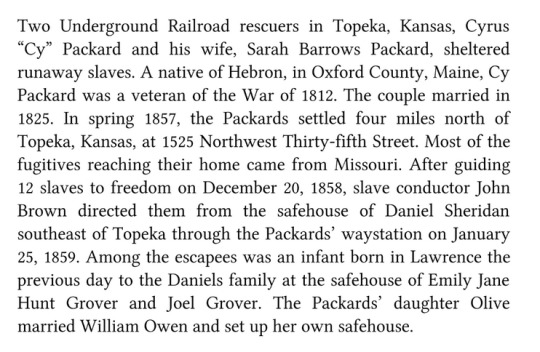
Cyrus, my third cousin six times removed, [1] was the son of Icabod (1760-1814), captain and Revolutionary War veteran, and Rachel Cole (1768-1825). The latter was the daughter of a farmer named Ephraim Cole and Hannah Randall Pratt. Rachel received 26 pounds, thirteen shillings, and four pence at the time of Ephraim's death in September 1775. [2] In contrast, Icabod was the son of Reuben John Packard (1737-1820), another Revolutionary War veteran, and Anne D. Perkins (1737-1806).
This differed from Sarah Barrows, a woman who Cyrus married in January 1825. She was the daughter of William Barrows, a Deacon who established Hebron Academy in Hebron, Maine, and Catherine Pratt Macumber. Catherine had previously been married to man named Seth Macomber, with her maiden name as Pratt. [3] The story above is confirmed by various documents. The 1850 census shows Sarah, Cyrus, and their seven children (Sarah C., Charlotte A.H., Rachel C., Olive Augusta, Georgianna, Samuel F.) in Piscataquis, Maine, where Cyrus is a farmer, while Charlotte is a seamstress, and two farmers are in the same household (William Brown and Randall Chase). By 1860, Sarah and Cyrus would be living in Soldier, Shawnee, Kansas Territory, along with their daughter Catherine, son Samuel, daughter Olive, and three other individuals (William E. Bouker, William Owen, and Martha Owen). [4]
This also provides further evidence of the fact that Olive married William Owen, as they are living together in the same household. The 1900 census indicates that they married in 1859, as do other records. [5] More significant is an article in the Topeka Daily State Journal on June 5, 1907, an obituary of William, which tells the story of the role William and Olive had in the Underground Railroad and much more.
Another Kansas pioneer has. gone across the divide. William Owen came to Kansas In 1856, He made his home near the town of Indianola, Shawnee county. In 1858 he married Olive A. Packard. The house that he built on the Topeka and Holton road, near Rochester school house was one of the first houses built in that community, and is still occupied as a residence. It was a station of the "Underground railway," and John Brown made frequent trips along this road with his runaway slaves…Mr. Owen never sought office, and took little interest .in the game of politics--except as a means to an end…Mr. Owen was a close observer of men and things. He kept in touch with all reform movements. He joined the Greenback party and later the Socialistic wing of the People's party.
The aforementioned book, The Underground Railroad: An Encyclopedia of People, Places, and Operations, cites L.L. Kleine's article "The Battle of the Spurs and John Brown's Exit from Kansas" for its information about how the home of Cyrus and Sarah was a waystation on the Underground Railroad, and the house of Olive and William was a safehouse. The latter is described in detail on one page, noting that William put is life on the line and was jailed for his views:

William E. Connolly's 1918 book, A Standard History of Kansas and Kansans is cited as a source
Kleine goes into details about a trip across the Underground Railroad in January 1859, stating that a "stop was made at the home of Cyrus Packard, four miles north of Topeka, where the negroes were unloaded and the refugees and their escort ate lunch". After failing to find the information in the first volume, the second volume, or the third volume, I found a whole passage about William in the fourth volume, on pages 1764 and 1765, noting some fascinating details, which says a lot about their involvement in the abolitionist movement and Underground Railroad:
Much of the pioneer history of Kansas might be written around the names Owen and Packard. The late William Owen was one of the men who came from the East in the days of the '50s for the purpose of assisting in the movement to make a free state out of Kansas. His father- in-law, Cyrus Packard, was also a prominent leader in the free state movement. Born in Rhode Island in 1827, William Owen came to Shawnee County, Kansas, in 1856, about the time the first territorial government was organized. As a young man in Rhode Island he learned and fol- lowed the trade of carpenter, and for a time was in the same vocation in Kansas. Later he conducted a sawmill, his being one of the first mills in the territory. He also was a merchant and kept a store at Rochester. After the war he was a farmer and carpenter, but in 1880 concentrated all his efforts upon farming and continued in that work for eighteen years, when he retired from business and moved to Topeka. Mrs. William Owen before her marriage was Olive Packard, and the Packard and Owen families lived close neighbors after coming to Kansas.
Her father, Cyrus Packard, who was born in the State of Maine June 5, 1796, served as a soldier in the War of 1812. He was a man of deep religious convictions, an active supporter of the Congregational Church and carried his religious beliefs and his social principles into practical action on every occasion. At the time of the abolition movement in Maine Cyrus Packard and one other man were the only ones in their community who had the courage to speak and advocate the cause openly. Cyrus Packard was nearly sixty years of age when the Kansas Nebraska bill was passed and precipitated the conflict for a free state in Kansas. It was his ardent belief in abolition that caused him to abandon his comfortable home and come out to help make Kansas free. William Owen was likewise zealously identified with the free state movement.
At one time he was captured by the slave faction in Kansas and was taken to Lecompton and put in prison. A few days later the governor of the territory arrived at Lecompton, dined with the prisoner, and in a few days secured his release. Mrs. William Owen herself has many interesting anecdotes to relate concerning early days in Kansas. She recalls the fact that John Brown stopped one night at the Owen house with sixteen negroes, and Brown was not an infrequent visitor at the Owen or Packard homes. In fact everyone associated with the old underground railroad knew the Owen and Packard families. General W. T. Sherman when a young man managing the Thomas Ewing ranch boarded with the Owen family and the general with Mr. Owen 's assistance built what was known for many years as the Sherman cabin. Mr. and Mrs. Owen had fourteen children, six sons and eight daughters. Ten of these children are still living.
There's more than this. Cyrus was apparently described as "one of the first anti-slavery men" by one of his daughters, Olive. The house she lived in with William, and which Cyrus and Sarah seemingly also lived in, built in 1857, was partially burned in 2009 and sadly demolished in 2015. The words of Olive were quoted in Joanna Stratton's Pioneer Women. Otherwise, the memoir of Georgianna, one of Olive's sisters, notes that in 1858, a "family of colored people" lived in the house, while Olive's memoirs are mentioned various times as a primary source. [6] As it turns out, the memoirs are within the Kansas Historical Society's Lilla Day Monroe Collection of Pioneer Stories but have have not been, yet, posted online. However, a genealogical article written by Robert Stone in the June 1947 edition of Bulletin of The Shawnee County Historical Society, notes that the home of Cyrus and Sarah was a "hiding place for John Brown and his underground railway". It also describes her as a remarkable woman who was the unquestioned head of the family, had six daughters who became teachers, and was "always interested in political and literary affairs." Perhaps due to a frontier spirit, she was interested in her roots, and was proud of being a DAR member, even though the DAR itself was inherently racist and is historically white, only admitting its first Black member (Karen Batchelor Farmer) in 1977 and added a Black woman (Wilhelmina Rhodes Kelly) to its board in 2019.
The National Underground Railroad Network of Freedom gives more detail, noting that the first station north of Topeka was cabin of William Owen and Sarah, "one of a few extant sites to have hosted John Brown and those he led northward". Otherwise, there is an account by genealogist Lillian Stone Johnson which reprints letters from Cyrus. In one letter to Sarah and Hannah in 1856, Cyrus says he would like to go to Kansas and notes the importance in moulding a future society, while a letter from Georgianna the same year to her siblings says they are knitting a pair of stockings for Kansas. In others, Cyrus continues his planning to go to Kansas. The same account says this:
…Cyrus Packard and William Owen ran an underground railway station at their place…on the corner across from the present Rochester School. Here John Brown often came with negroes. They were kept in the wagon overnight and Sarah Barrows Packard, Cyrus' wife and Olive Packard Owen fed them breakfast and sent them on.
Other genealogists have noted that Cyrus and Sarah Packard, in-laws of William Jordan, a committed abolitionist, "were deeply involved in Underground Railroad activities, as was his brother-in-law, William Owen." John Brown, at the time, was soliciting funds and arms to support fighting in the Kansas territory. One book seems to bring all these stories together: My Common, Remarkable Family: Civil War to the Twenty First Century. It is edited by Tony Allen. Kristen Kimberly Eppsfurther wrote about the story on page 213 of her 2010 Masters Thesis, "Bound Together: Masters and Slaves on the Kansas-Missouri Border, 1825-1865":
One later reminiscence described the fugitives’ frame of mind during the ordeal. Cyrus Packard’s daughter Olive Owen, who witnessed her father’s abolitionist work, recalled that “they were quite a jolly set.” This was even the case after they had slept outside in wagons hidden behind some thick brush near the Packard home (at Kansapolis, now known as Rochester). [7]
Others said that the home of Cyrus was within a community sympathetic with rescue of enslaved peoples. These Packards are not the only ones who were either anti-slavery, abolitionist, or both. Others include William Packard (1791-1870), one of the earliest supporters of abolition in Cummington, Massachusetts, Theophilus Packard (1769-1855) was a vice president of the Massachusetts Antislavery Society, while the house of Bowdoin College professor Alpheus Spring Packard is now known as the Russwurm African American Center and may have been a waypoint for enslaved peoples as part of the Underground Railroad. Additionally, the Ramsdell House in Mason Road, Egypt, New York was said to be an Underground Railroad station, along with food and other markers in the forest to help those fleeing slavery. Gideon Ramsdell, who owned the house lived in the same town as Philander Packard who had married Minerva Lapham, with Lucy Lapham, who was born in Cummington, as the mother of Gideon. [8] I hope to find more antislavery ancestors in the future, and if I do, I'll be sure to write about them here.
Notes
[1] However, FamilySearch says he is my first cousin seven times removed, which is another way of saying the same thing, I think.
[2] Will of Ephraim Cole, 1775, Massachusetts, U.S., Wills and Probate Records, 1635-1991, Plymouth, Probates, Vol 24, 1775-1777, pages 75-77, images 71 and 72 of reel as shown on Ancestry.com.
[3] Maine, U.S., Marriage Records, 1713-1922 for Sarah Barrows, Oxford, 1825, P, Maine State Archives; Cultural Building, 84 State House Station, Augusta, ME 04333-0084; Pre 1892 Delayed Returns; Roll Number: 82, image 1; Miss Katharine Pratt in the Massachusetts, U.S., Town and Vital Records, 1620-1988, Town and City Clerks of Massachusetts. Massachusetts Vital and Town Records. Provo, UT: Holbrook Research Institute (Jay and Delene Holbrook), image 855, original page 383; Sarah Barrows in the Maine, U.S., Birth Records, 1715-1922, Maine State Archives; Cultural Building, 84 State House Station, Augusta, ME 04333-0084; Pre 1892 Delayed Returns; Roll Number: 6, image 3 of 15.
[4] 1850 United States Federal Census for Sarah Packard, Maine, Piscataquis, Monson, Year: 1850; Census Place: Monson, Piscataquis, Maine; Roll: 267; Page: 220a-220b; 1860 United States Federal Census for Sarah Packard, Kansas Territory, Shawnee, Soldier, Year: 1860; Census Place: Soldier, Shawnee, Kansas Territory; Roll: M653_352; Page: 725-726; Family History Library Film: 803352.
[5] 1900 United States Federal Census for Olive A Owen, Kansas, Shawnee, Topeka Ward 01, District 0145, Year: 1900; Census Place: Topeka Ward 1, Shawnee, Kansas; Roll: 500; Page: 3; Enumeration District: 0145; FHL microfilm: 1240500, United States of America, Bureau of the Census. Twelfth Census of the United States, 1900. Washington, D.C.: National Archives and Records Administration, 1900. T623, 1854 rolls.
[6] Megan Hart, "Daughters of 1812 honor veteran, abolitionist," The Topeka Capital Journal, Apr. 6, 2013; "Kansas Frontierswomen Viewed Through Their Writing: The Memoir of Georgianna Packard," ed. Glenda Reilly, Kansas History, Winter 1986, p. 186; Mike Hall, "Burned house harbored slaves," The Topeka Capital Journal, Oct. 19, 2009; Tim Hrenchir, "Owen House, a Civil War-era home north of Topeka likely used on Underground Railroad, demolished," The Topeka Capital Journal, Oct. 7, 2015; Chapter IV, History Of Shawnee County, Kansas, 1905.
[7] She cites Olive Owen, “Some Remembrances of the Underground Railroad,” 1908, in Shawnee County History Collection, Library and Archives Division, KSHS.
[8] Sela Kay, "Russwurm Center: a missing link in the Underground Railroad?", The Bowdwin Orient, Dec. 6, 2019; "Four Cummington Abolitionists," Cummington Historical Commission, accessed September 26, 2022; Bertha Bortle Beal Aldridge, Laphams in America: Thirteen thousand descendants including descendants of John from Devonshire, England, to Providence, R.I., 1673, Thomas from Kent, England, to Scituate, Mass., 1634 and Genealogical Notes of other Lapham Families (Victor, New York: 1932-1933), 104, 171, 440-441. For another Cyrus see the biography of Cyrus A. Packard, who lived in Maine.
Note: This was originally posted on Mar. 6, 2023 on the main Packed with Packards WordPress blog (it can also be found on the Wayback Machine here). My research is still ongoing, so some conclusions in this piece may change in the future.
© 2023 Burkely Hermann. All rights reserved.
#underground railroad#black history#black lives matter#packards#genealogy#family history#genealogy research#ancestry#lineage#census#abolitionists#19th century#18th century#kansas#topeka#cummington#massachusetts
0 notes
Photo







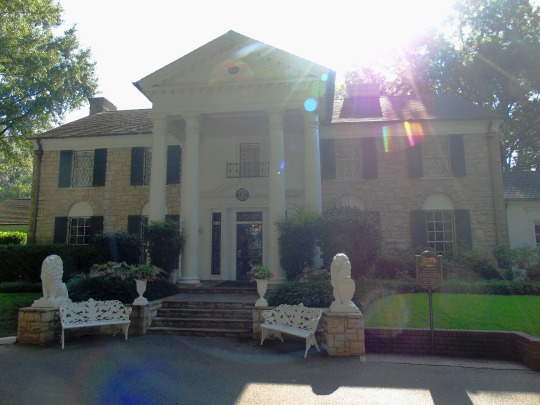


Tennessee was admitted as the 16th state of the United States on June 1, 1796.
#The Pinnacle at Symphony Place#Nashville#Chattanooga Choo Choo#travel#Chattanooga#Court Square#Memphis#original photography#summer 2016#vacation#tourist attraction#landmark#architecture#cityscape#flora#Country Music Hall of Fame and Museum#Tennessee River#Beale Street#Mississippi River#Graceland#Cumberland River#Tennessee#16th US State#1 June 1796#anniversary#US history
0 notes
Text
HMS Surprise
Even though she is a great heroine in the novels of Patrick O'Brian, there was actually a frigate with this name. She was designed by Pierre-Alexandre Forfait as a corvette and launched on 16 January 1794 as Unité.

The Toulon Blockade - The newly-captured HMS Surprise (ex l’Unité) reporting to HMS Victory for orders. Sunset, 19th June 1796, by Geoff Hunt (x)
On 20 March 1794, the 41-year-old lieutenant de vaisseau Jean le Drézénec, who had joined the naval service shortly after the Revolution from the merchant service, took command of the Unité. He supervised the ship's equipment and found that the long guns were too large to be easily reloaded and the lower sails were also too large. He informed the authorities, who told him to stop equipping the ship as a major naval operation was imminent. Shortly afterwards, Unité took part in the Battle of the Glorious First of June, escorting the sunken Révolutionnaire, which was being towed by the Audacieux.
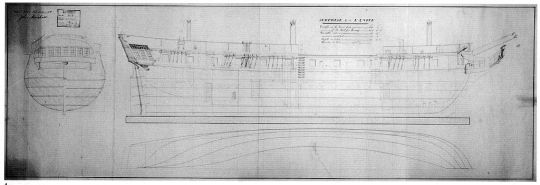
Plan of the Surprise/ Unité (x)
In June 1794, Unité finished repairs at Saint-Malo and Brest on the damage she had sustained in the battle. In the months that followed, she escorted merchant ships along the French coasts. On 28 September, together with the corvette Bergere and under the command of Lieutenant de Vaisseau Gouley, the two ships left Brest to sail north-west between Ireland and the islands of the Hebrides and St Kilda to intercept enemy merchant ships. On 17 October, the ships captured the merchant ship Dianne. The next day the weather deteriorated and the two ships were separated. Unwilling or unable to continue the mission alone, the Unité searched in vain for the Bergere for sixteen days before returning to Brest on 1 November. After repairs, the Unité was ordered to the Mediterranean fleet at Toulon, where she arrived in March 1795. She spent the rest of the year either blockading in port or as a courier ship. In April 1796 she was ordered to North Africa on one such courier service, bringing personnel and news to the port of Bône. Le Drézénec, who had been promoted to Capitaine de Frégate shortly before, was suffering from smallpox at the time and was not fit for service. Therefore, their first lieutenant, Le Breton, took command of the Unité.
Captain Thomas Fremantle, commanding the frigate HMS Inconstant, had heard that a French frigate was at Bône and sailed to intercept it. When the Unité arrived on the afternoon of 20 April 1796, the watch on board the Unité identified the Inconstant as a neutral ship and Le Breton did not release the ship for action. About an hour later, the Inconstant sailed alongside, boarded and captured Unité unharmed. She was renamed HMS Surprise and commissioned as a 28-gun frigate. In 1797 the ship was stationed in Jamaica and returned to the shipyard at Plymouth in January 1798. There the armament was changed to 24 32-pdr. carronades, 10 18-pdr. carronades and 2 long 4-pdr. guns; the hull was plated with copper.
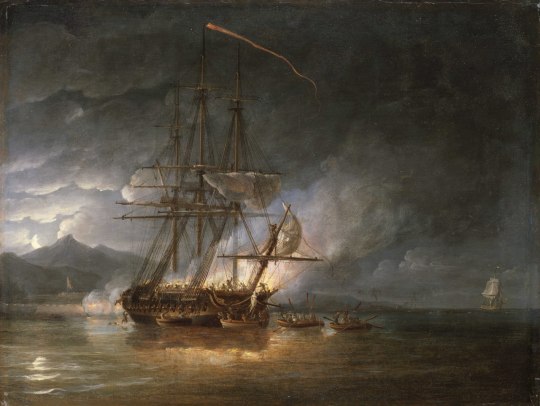
HMS Hermione being cut out of Puerto Cabello by boats from HMS Surprise (on the right), by Nicholas Pocock, late 18th century (x)
HMS Surprise gained fame for the recapture of HMS Hermione. The crew of the Hermione had mutinied and retreated with the ship to the Spanish port of Puerto Cabello. The captain of the Surprise led a privateer crew into the harbour on boats and, in a rather bloody raid, abducted the Hermione and the remaining crew under fire from the Spanish fort.
She had no more service time after that and so she was decommissioned in February 1802 and was broken up.
55 notes
·
View notes
Text
Work Cited
58 BCE-16, Livy, and Duffield Osborne. “Roman History, Books I-III.” The Project Gutenberg eBook of Roman History, Books I-III, by Livy and Duffield Osborne, March 5, 2023. https://www.gutenberg.org/cache/epub/10828/pg10828.html.
“The Battle of Lake Regillus.” Ars Bellica. Accessed March 20, 2023. http://www.arsbellica.it/pagine/battaglie_in_sintesi/LagoRegillo_eng.html.
Cartwright, Mark. “Roman Architecture.” World History Encyclopedia. https://www.worldhistory.org#organization, March 11, 2023. https://www.worldhistory.org/Roman_Architecture/.
Chester, Allan. “Ancient Roman Statutes : Translation, with Introduction, Commentary, Glossary, and Index.” Avalon Project - Documents in Law, History and Diplomacy. University of Texas Press, 1961. https://avalon.law.yale.edu/ancient/twelve_tables.asp.
“Colosseum.” Encyclopædia Britannica. Encyclopædia Britannica, inc. Accessed March 20, 2023. https://www.britannica.com/topic/Colosseum.
Macaulay, Thomas Babington. “Lays of Ancient Rome.” Lays of Ancient Rome, by Thomas Babington Macaulay, March 1, 2023. https://www.gutenberg.org/cache/epub/847/pg847-images.html.
PICRYL , Public Domain. “Pirro Ligorio - Speculum Romanae Magnificentiae: Circus Maximus - Picryl - Public Domain Media Search Engine Public Domain Search.” PICRYL, January 1, 1553. https://picryl.com/media/speculum-romanae-magnificentiae-circus-maximus-83210f.
Platner, Samuel Bell. “... The Topography and Monuments of Ancient Rome : Platner, Samuel Ball, 1863-1921 : Free Download, Borrow, and Streaming.” Internet Archive. Boston, Allyn and Bacon, January 1, 1970. https://archive.org/details/topographyandmo02platgoog/page/176/mode/2up.
Press, World. “Roman Emperors – an Online Encyclopedia of Roman Rulers and Their Families.” Roman Emperors An Online Encyclopedia of Roman Rulers and Their Families, July 18, 2022. http://www.roman-emperors.org/auggie.htm.
Shah, Avani. “Circus Maximus – a Fusion of Roman Architecture & Entertainment.” The Arch Insider, June 10, 2020. https://thearchinsider.com/circus-maximus-a-fusion-of-roman-architecture-entertainment/.
Smollett, Tobias. “Letter XXXII .” Travels through France and Italy . J. Mundell & Co. Edinburgh, 1796., February 28, 1765. https://penelope.uchicago.edu/Thayer/E/Gazetteer/Places/Europe/Italy/_Texts/Smollett/Travels/32.html.
Society, National Geographic. “The Colosseum.” Education. Sarah Ap2pleton, National Geographic Society, National Geographic Society, September 28, 2022. https://education.nationalgeographic.org/resource/colosseum/.
Society, National Geographic. “Key Components of Civilization.” Education, September 28, 2022. https://education.nationalgeographic.org/resource/key-components-civilization/.
0 notes